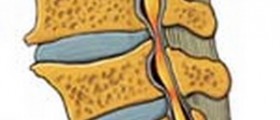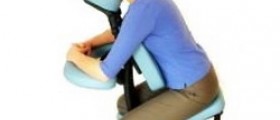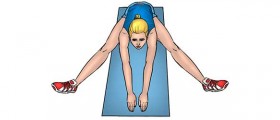Loading...
Found this forum looking for information on my extra vertebrae.
I'M A LONG TIME LOWER BACK PAIN SUFFERER!
I've suffered from intermittent and chronic back pain for over 20 years. After a year of regular treatment and attention the chronic part is gone. I never needed pain killers or steroids, it was never that bad, but I needed 10-15 minutes each morning after I got out of bed to "warm" my back up so the pain was not as severe. And my back has "gone out" on several occasions. Also, when walking, if I hit a step or change in elevation at a weird angle I get shooting sharp pain in my lower back. It's scary.
After researching and doing my own work I'm convinced most back pain, unless you've been injured in an accident, is musculoskeletal and derives from the simple but important ways the muscle, fascia and connective tissue of the hip girdle, lower back and spine relate to each other. When these are out of whack, for me anyway, I still get problems. Also, I believe ischemia, lack of oxygen to the muscles, is the source of lots of back pain. I don't believe that the back is a delicate structure, nor the spine, I think we've been brainwashed with that fear. The pain is real, no doubt, but the cause or origin is very rarely injury.
I've used these tools with success: The Miracle Ball Method, using tennis balls and body weight to release/massage erector and glute muscles, and the Relax the Back machine on TV which is continuous passive motion. All work for me and help release tight/locked and or spasming muscles.
These are the books I found most helpful: Healing Back Pain by John Sarno. This is a must read on my opinion. His work, in a nutshell, concludes that there is a very strong mind-body connection with back pain. I think the book really helps to dispel a lot of the myths and fear surrounding back pain, like: herniated discs cause back pain. They can, if they're touching a nerve, but herniation alone does not cause pain.
Dr. Sarno's book gives many examples of patients with no symptoms of back pain suddenly develop back pain when they found out, from an x-ray for an entirely unrelated condition, that they had a herniated disc. The mind can be a powerful tool in determining health.
Last year I went to a chiropractor in the beginning of my rehabilitation and discovered that not only did I have an extra vertebrae, but also that one of my discs suffered from "stage 3" degeneration or "3rd degree" degeneration (I'm not sure of the terminology) which I could clearly see on the x-ray. Since that time my condition has only improved, meaning my back pain by and large is gone, and I felt empowered from reading Dr. Sarno's book that the degeneration was probably unrelated to the pain I was experiencing.
In other words, the fear of a bad back is often times worse than the reality of the actual condition.
Here's a short list of what I focused on, starting early Fall of 2010.
1) 6 months of twice a week deep tissue and myofascial massage/release, followed by 5 months of once a week maintenance sessions of the same.
I found a great, experienced massage therapist that I give 95% of the credit for my improvement. She was at one time an architect, and so her approach to the body was very scientific and thorough. In the beginning we focused mainly on the erector and quadratus lumborum muscles of the lower spine, and it took, no joke, over 3 months to unlock and loosen those muscles to the point where I felt relief from pain and tightness.
Muscles have memory, and in my case we were dealing with a 20 year pattern of dysfunction. The first 4 to 6 weeks she couldn't even penetrate the surrounding muscles to get to my quadratus lumborum, but once she did.... I thought it was a miracle. So much relief. However, it took another 6 weeks before those muscles could maintain a relaxed state for more than a day or two.
2) Our second focus was the muscles around the pelvis, including the glutes, psoas. We also did a little abdominal work, which is a very strange sensation.
She said a massage every 5 days was necessary to maintain relaxed muscles in, the beginning. She was right. Almost a year later I see her only every other week. Sometimes I'm fine, sometimes I'm tight, sometimes I'm in a little discomfort. But it's nothing like what I experienced a year before I started, or for that matter the last 20 years of my life.
Here's a short list of my stats and activities, maybe someone can relate:
1) I run 15-18 miles a week. My left leg is almost always 1/2 to 1 inches shorter than my right. To remedy this I practice what's called "blocking," a technique allowing the muscles around my right hip fall or extend so they stretch and release my the rest of my right leg. After 3 or 4 minutes my legs are the same length again. Most people have this leg issue.
2) I do simple Yoga, its great for stretching and lengthening muscles in the upper leg, hips and back. When the muscles of the glutes and hamstrings contract and shorten, from hours upon years of sitting in chairs all day, this can cause in the lower back. For years I could get some relief from my pain by stretching my hamstrings.
3) I use my Relax the Back machine in the morning and evening. Yeah, that one on TV. The motion is subtle and so are the positive results, it takes about 3 weeks to notice relief, but it works for me.
4) I use the Miracle Ball Method daily to massage and release the muscles in my lower back and spine. Elaine Petrone invented the technique. The story of her pain/condition is also very interesting. I picked it up at a Costco about 4 years ago, on a lark, and was really surprised that it worked for me. Using it coincided with when I started running seriously and it was a great help. My lower back still pops when I get on the ball, which I place at the bottom of my spine, about at the sacrum.
5) I use tennis balls to massage/release the glute muscles, particularly where they attach to the iliac crest. When I first did this last year my lower back released immediately and began popping like crazy. This was just after a 90 minute massage too.
6) And because I run, I use a foam roller to massage my erectors, IT band, hamstrings and quads.
Finally, I'm 6' 1" and weigh about 180 pounds. I'm not a natural runner by any means. I wear orthotics in all my shoes, although I now like to go barefoot to try and strengthen the muscles in my foot and work on proper alignment when walking. I also run half the time in low profile/minimal shoes which helps with, without my orthotics, which helps with proper form and alignment.
I also Chi Run, which I can recommend to any runner suffering from any kind of pain, including back pain, that doesn't want to give up running. I truly don't believe you have to.
I hope someone finds this helpful. Back pain sucks
Loading...
Loading...
Hi There
I came across your mail after I paid a visit to a Neurologist today. I have been experiencing lower back pain since 2008. At first I was told by my GP that I tore ligaments around my sacroiliac joint but after todays doctors visit I was made aware that I have a 6th lumbar vertebrae and that is the probable cause of my pain. Since my first injury in 2008 I have not been able to run without feeling the pain shoot down my legs and up my spine and on occasion I get the stabbing pain when I make sudden movements, if I lay or sit funny and sometime it will happen mid stride while Im walking. Next week I will be going for a bone density scan to decide on a way forward. Unfortunately I have no answers for the pain, I have been living with it since 2008 and not even pain killers help. The only thing I can suggest is
1. Sleep with a pillow under your legs (When you are on your back) and between your knees (when on your side), this gives your spine and back support and may ease the pressure.
2. If you are female, DO NOT wear heels while you are experiencing your back problems. If you are like me it comes and goes.
3. Try to avoid stairs
Good Luck!!!
Loading...
Loading...
Loading...
Loading...
Loading...
Loading...
Loading...
Loading...
Loading...
I also have an extra vertebrae in my lower back. I have been dealing with back pain for almost 30 years. My M.D. actually sent me to a chiropractor when I was a teenager because there really wasn’t anything he could do. Both he and the chiropractor have mentioned that aerobics, lunges, squats, running, the stair stepper and any "jarring activities" will throw it out of alignment. Also lifting anything over 25lbs is bad as well. <?xml:namespace prefix = o ns = "urn:schemas-microsoft-com:office:office" />
I try to stay physically fit and away from pain medication. Aleve is the strongest I prefer to take because it is hard to function on muscle relaxers and pain meds. They also don't fix the problem. I also have 2 deteriorating discs and arthritis in my back, (diagnosed at age 33).
There really isn’t anything that can fix the problem of an extra vertebrae but there are things that you can do to keep your spine in alignment.
Swimming is great for the back but not always easily accessible.
I just started a fitness/weight loss program. The good news is I am half way to my goal weight. The bad news is all the cardio I have been doing has been throwing out my back. My chiropractor informed me this week to stay off the treadmill. Something about it isn’t agreeing with my hip. My choices in cardio are now stationary bike, elliptical machine or walking on a soft track.
Cardio is the fastest way to lose weight (along with diet) but yoga is also a great way to strengthen and tone your muscles. My back always feels better after yoga and when I am consistently taking yoga classes.
I am always searching for new ways to exercise that won't hurt. Good luck to you all. I hope my tips have helped.
Loading...
I found out at age 32 I had this problem the hard and painful way. I herniated a disc at L6-S1 and could not even walk. The spine doctor told me it is more likely for this to happen with an extra vertebra. I also have a spina bifida their as well. I had no choice but to have surgery for the herniated disc which my Dr. told me it was completely extruded and the largest he had ever seen. I have always been physically active but now at the age of 47 can hardly walk sometimes. I had a fusion surgery after the disc hernation because I was having severe muscle spasms and pain that continured in my right leg. Needless to say I will never be the same and have been taking pain pills and meloxicam to help. I have since been diagnosed with severe spinal stenosis at level L3-L4 and I am really afraid to go see the specialist that my genreal DR referred me too. I wish you the best of luck and know what everyone out there is going through.
Loading...
Bev
Loading...




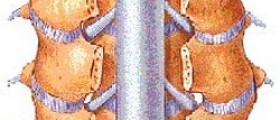
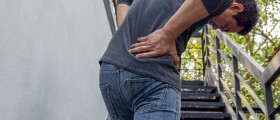
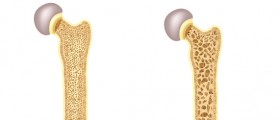
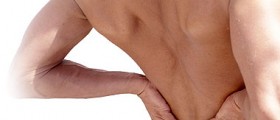
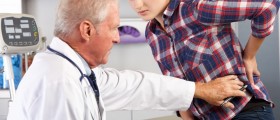
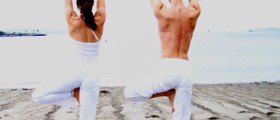
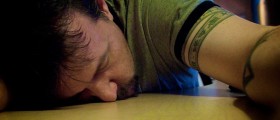
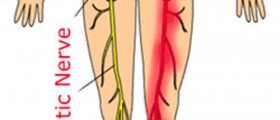
-Test-And-What-Do-The-Results-Mean_f_280x120.jpg)

